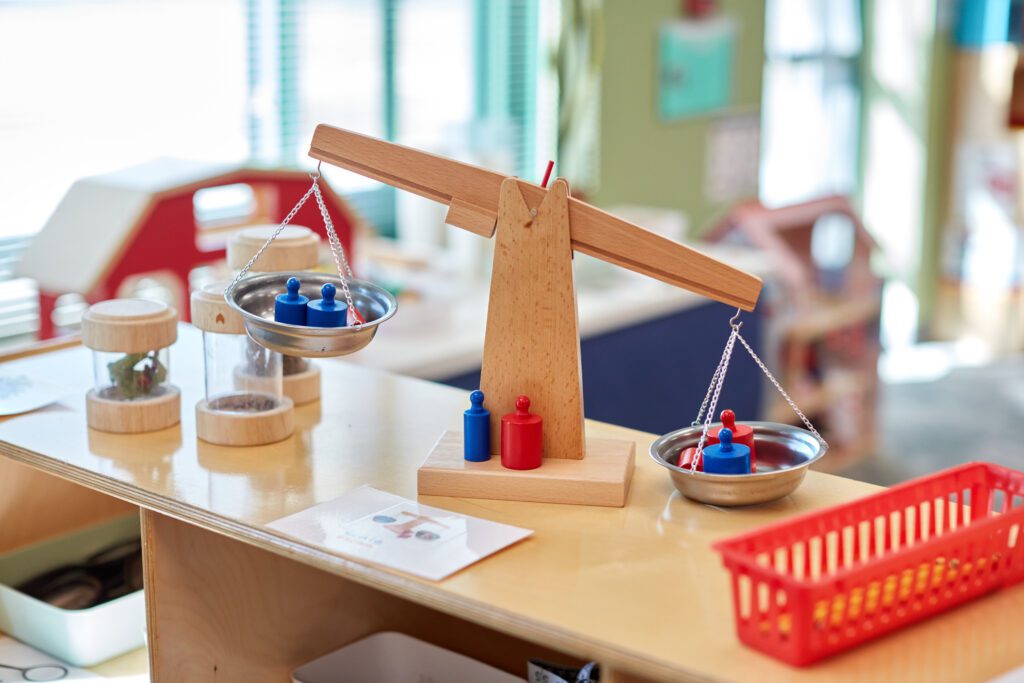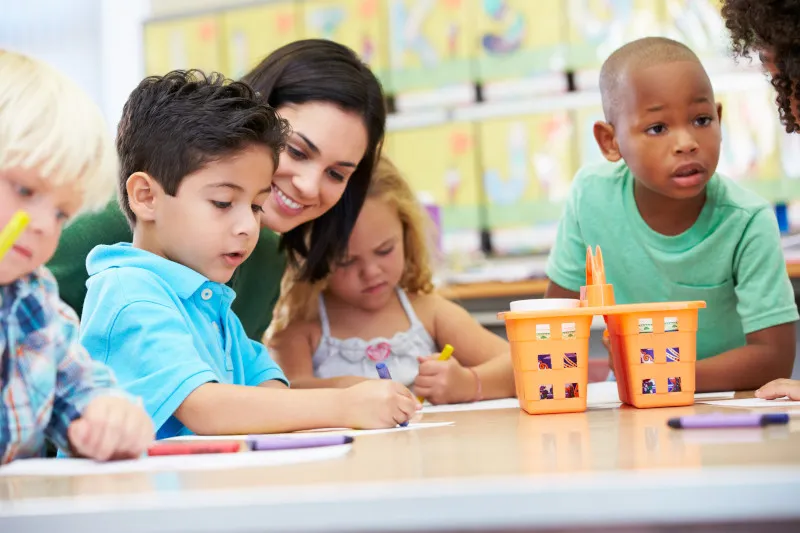Assessment Data and the Learning Environment: Choosing Classroom Materials

Responsive, intentional teaching comes down to an ongoing cycle of learning: your learning promotes children’s learning.
The more you learn about children, the better prepared you are to support their learning. When you gather and pay attention to information about what children know and can do, you can be more intentional in your decision-making. Often, the first thing that comes to mind for teachers is the experiences they plan and implement, the things that get written into daily plans. But another way to be intentional is through the classroom materials you choose to provide for children to interact with, play with, and learn from.
Creating a Data-Driven Learning Environment
When it comes to creating a learning environment for early childhood education, the physical setup plays an essential role. In fact, the classroom’s physical environment can be considered “the silent teacher” that shapes children’s experiences and outcomes. And it’s not only about the arrangement of classroom furniture, which creates spaces for large- and small-group experiences, or the materials that the teacher will use. It’s also about the materials that the children get their hands on.
Consider this idea in the context of adult learning: a well-organized, aesthetically pleasing workspace can contribute to our productivity, well-being, and overall satisfaction. For example, if I have the goal of improving my culinary skills, a kitchen space that is clean and organized will make my learning easier.
But I may never get better at whipping up a meaty, cheesy lasagna if I limit myself to practicing my kitchen skills using only strawberries and whipped cream.
A kitchen that is stocked with ingredients for the dishes I am most excited to cook will not only make it easier for me to practice what I want to get better at but encourage me to try new ideas, persist, and enjoy the outcomes. We need to engage in the same thought process when setting up our classrooms to enhance children’s learning.
While knowing what children need may not be as obvious as identifying the ingredients in a recipe, you do have information that can help you be more intentional in the ways you support children: the documentation of learning that you collect.
How can data help me create a responsive learning environment?
Data tells a story. We know that the evidence we collect of children’s learning throughout the year drives planning for the learning experiences and activities we plan. A data-driven approach to arranging and stocking the physical environment is just as important.
Remember that data isn’t an end unto itself. We collect data for the role it can play in opening our eyes to developments we didn’t recognize in the moment or establishing trends that help us understand and support children’s needs. Data empowers us to understand where children are stretching and learning and where they might need extra support. We can use this information to our advantage—and, ultimately, their advantage—when setting up the classroom.
I have data. What comes next?
When the teacher couples her information on children’s current knowledge, skills, and abilities with an understanding of the impact of the materials available to children, she is best prepared to make intentional decisions that will lead to improvement in learning outcomes.
For example, if your data tells the story that the children in your classroom are not demonstrating expected levels of knowledge for their age in mathematics skills such as counting, quantifying, measuring, or representing and analyzing data, you can look for ways to emphasize math content throughout your environment—including through the materials that children have access to.
Here’s how you can do it.
When I want to plan a specific activity to promote (and assess!) a specific skill, I know I can easily search for Intentional Teaching Experiences and Mighty Minutes activities by the objectives they address. But when I identify an area that children need additional exposure to or practice with and I want more general guidance about supporting learning, I turn to The Creative Curriculumfoundation volumes for ideas on ways to incorporate that content throughout the classroom environment.
For our example about promoting math skills, I would turn to Volume 5: Mathematics. Chapter 1 defines what different components of mathematics look like in a preschool environment, and Chapter 4 addresses how to stock interest areas to promote math learning.
Guidance in these chapters might lead me to assess the collectibles available for counting and sorting. Are children using these items during choice time? If not, why? Think about how the collectibles are displayed and whether they are attractive and accessible to children. Consider whether the children might be more inspired to work with objects that are relevant to a current study or something they’re already interested in, such as toy animals, toy vehicles, plastic flowers, or shiny stones. Think about how you can add those materials to your Toys and Games, Discovery, or Art areas and introduce them to children.
By considering data and being intentional with incorporating learning opportunities and interesting materials throughout the environment, educators can leverage the environment of the classroom to promote growth and positive outcomes for children. With a thoughtfully and intentionally designed classroom, children are best set up to learn, develop, and grow.

Improve Learning Outcomes for Every Child
Transform your program with The Creative Curriculum.
Learn moreAbout the Author: Barbara Whitfield

Barbara began her career as a preschool and early childhood special education teacher. After spending nearly a decade in the classroom, Barbara transitioned into the role of an early childhood instructional coach in the Dallas Fort Worth area. Currently, Barbara works as an educational consultant for Teaching Strategies where she delivers professional development and instructional coaching to administrators and educators nationwide.